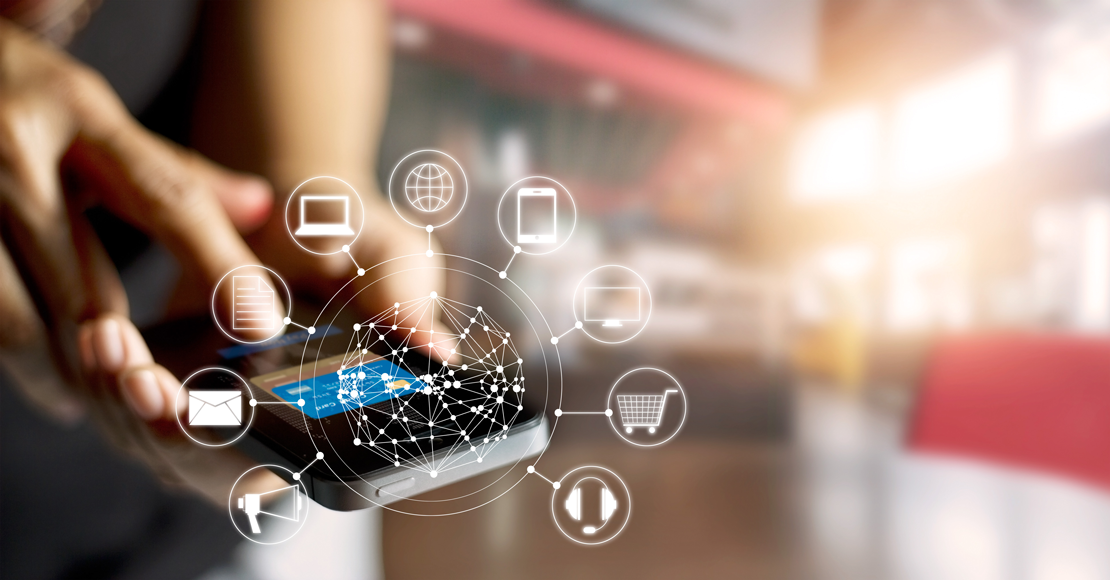
Watches that suggest ways to manage your cholesterol. Smart glasses with real-time product information overlays. Refrigerators that tell you how your stock portfolio is performing and remind you to buy 2% milk. With over 4 billion potential consumers engaging with digital and with over 2 trillion dollars a year exchanged in the digital marketplace, in 2020 and beyond your ability to ‘market’ is limited only by your imagination.
As digital marketers, the challenge will continue to be marrying industry-specific technical advances, with creative problem-solving. Brand managers now have the ability to connect in real-time with potential consumers, leveraging the insights gleaned from hard-won experience, into effective campaign building and return on investment.
Here are the 5 trends that will define digital marketing in 2020.
Multichannel Marketing
Multichannel marketing, as the name suggests, refers to multiplying your contact points with potential customers while offering them a quality, uniform experience across your supply chain, and different choices as to how they research, interact and ultimately, purchase. Multichannel marketing combines and compliments your different distribution and conversion channels to better nurture potential customers, encouraging them to respond and interact with your brand on their terms, in their own time, and through their preferred channel.
As all digital marketers know, the key to marketing success in 2020 and beyond is ‘choice’. Businesses overly focused on their brick and mortar sites with no due homage to the ways modern customers actually interact – via chat, email, and social media – ignore the many opportunities along the conversion funnel to contact, inform, nurture, and connect with their customers. Well-conceived multichannel processes allow businesses to always be where their customers are - in their favorite platforms and chat apps.
VR & AR
According to analyst Maria Weinberger, over a quarter of high-end digital marketing leaders already acknowledge that virtual and augmented reality will define the field in the coming years.
With spending on AR and VR estimated to have increased from $12.1 billion in 2018 to more than $20 billion in 2019, the ability to communicate virtual or augmented marketing messaging directly to consumers, in real-time, offers both consumers and businesses a platform through which they can actively and holistically explore potential relationships through engaging, interactive, and specific virtual and augmented interactions.
Chatbots
According to InvespCro, more than 67% of consumers worldwide used a chatbot for customer support in the past year and around 85% of all customer interactions will be handled without a human agent by (the end of) 2020.
Chatbots are automated, machine-learning-driven programs designed to manage and respond to customer interactions. Chatbots can be deployed to address specific frequently asked questions or deliver specific pre-planned or scheduled communications. With chatbots’ ability to ‘learn’ from every interaction, a business’ chatbot-driven customer relationships will only improve with time. This automation of customer interaction processes allows a higher degree of message personalization without increasing personnel costs.
Targeted Marketing
According to Forbes Magazine, 49% of people will not only ignore marketing messaging that is not related to a prior purchase or search, but may actively resent the intrusion.
In 2020 and beyond, digital marketers must focus on data analysis and their internal feedback loops to ensure that their strategy is as defined and specific as possible, ensuring the right potential customer is messaged with the right marketing communication. The outdated plug-and-play methodology of flooding the market with collateral simply does not work and may even be counterproductive. Marketing departments must focus their efforts on not only designing the right messaging but ensuring that it reaches the right people.
Personalization
As digital marketing analyst Alex Membrillo contends, marketing personalization refers to, “analyzing customer behaviors and promoting products based on assumptions and the user’s past purchase history”.
Hubspot’s media analysis indicates that 70% of customers react negatively to marketing content not relevant to them, while 50% of digital marketers acknowledge they need increased customer knowledge and insights. This Venn diagram of uncertainty is where personalization should be inserted. Understanding how to individualize the management of one’s leads or data sets in order to better structure one’s marketing communications strategy, will define the quality and rate of one’s engagement levels.
Explore other articles
Step into the future of business messaging.
SMS and two-way channels, automation, call center integration, payments - do it all with Clickatell's Chat Commerce platform.








